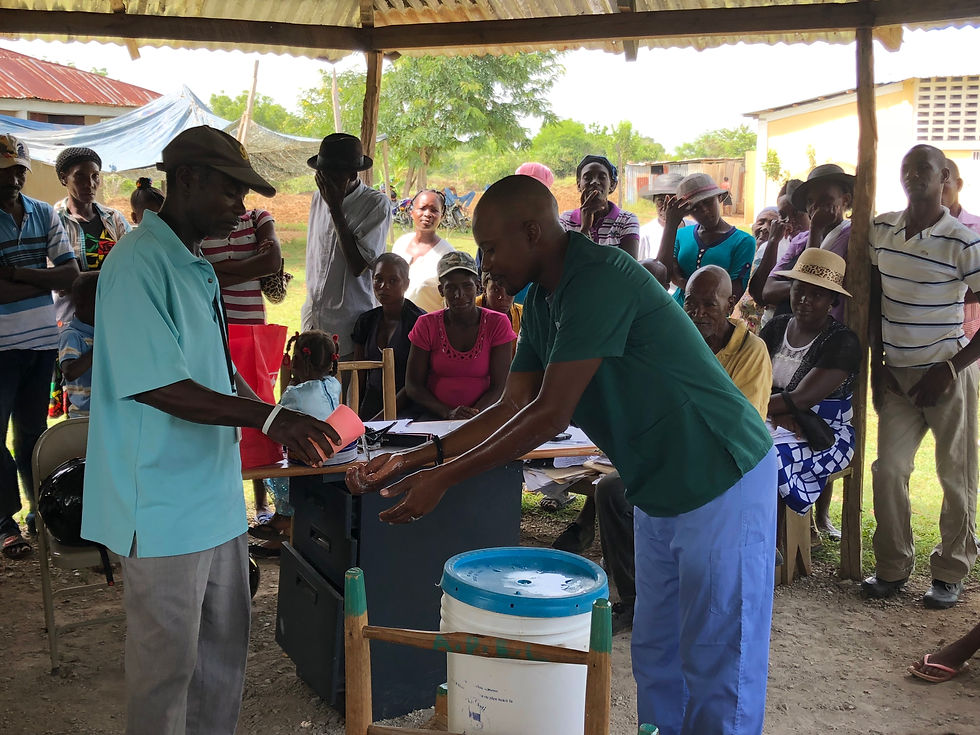September 2018: DLO
- Anael Rizzo

- Oct 24, 2018
- 4 min read
Updated: May 19, 2021

Dlo is Kreyol for the natural substance that forms when hydrogen and oxygen molecules react to make H20 (aka water). I think we can all agree that there’s nothing quite like a tall glass of ice cold water especially on hot summer days, or after long grinding sessions at the gym, school, work, etc… water is life giving. For me, being raised in arguably the best city in the world, my taste buds have been spoiled by some of the fresssshhessstt drinking water SF has to offer. This luxury though, is both a blessing and a curse. You see, all we have to do is flick our wrists and boom, that faucet starts running and our souls are immediately replenished. As for the curse, well, anything outside of this tastes mediocre at best. Now, I’m not trying to sound bougie, I applaud the city and their efforts to provide such a commodity for its people and recognize the privilege of having access to clean water, especially when our neighbors in other parts of the bay area, and further towards the central valley face disproportionate access. But, the main reason I mention Fri$cos water is because Haiti lies on a completely different spectrum. Although developing countries worldwide face similar conditions, I can only speak on what I’ve seen in this place. Thomassique has a legacy of systematically poor access to clean drinking water and as a result, some villages face increased rates of cholera and outbreaks of other water borne diseases. The water situation increased in complexity after the earthquake. Several issues regarding the organizational structure and implementation of aid affected Haitis local economy. People around the world felt a sense of urgency to help but, the damaged caused, despite good intention, created several large scale issues. Journalist John Katz writes in his book The Big Truck That Went By, How the World Came to Save Haiti and Left Behind a Diaster (Thank you Chloe for the book!) that, what Haiti really needs is “an efficient way to filter and purify water that is already present in Country.”
In 2008, former global health fellow Rita, conducted a study to compare two point- of- use treatment systems: Klorfasil and SODIS. These water systems were selected because they were easy to use and financially reasonable. Initially, her study showed that SODIS, despite its long process of purification, which essentially meant filling plastic bottles with water and letting them sit in the sun for 6 hours, was more affordable for community members. The following year, it was determined that Klorfasil would be the more sustainable option as it required less time (30 minutes compared to the 6 hour wait time). Klorfasil, which is what we currently use, requires dispensing a certain amount of chlorine into water and waiting for purification. After surveys were administered throughout the area, and an analysis of this system was carried out a few years later, we learned that there were mixed results. Because the purpose of my reflections is to share my thoughts, I’ll save the long dialogue about the pros and cons with Klorfasil, especially because there is a wealth of existing literature documenting failures and successes in developing countries. Point is, I want to be part of the team that cultivates methods that keep the communities wants and needs in mind and part of me questions the effectiveness of conducting certain projects if people still are unable to find accessible sources like clean water. How do we disentangle the underlying issues? Again, I don’t know and understanding how to bring aid in a thoughtful manner is a beast to tackle. Being on the ground and seeing these programs in action can leave you feelining both disillusioned and hopeful. I will always opt for the later (and still, I’m mindful of the reality). This is an on-going issue and not one I foresee us resolving in our year here. So, what do we do in the midst of all this? Work with local leaders; water directors, coordinators, and community health workers(CHWs) to develop methods that educate communities. For instance, local water coordinators in Bok Banik and Thomassique meet with their respective regions to hold demonstrations spanning from purification of water to proper hygiene. Ruth, Jason and I have been able to witness the enthusiasm from celebrations and sessions hosted by these individuals, specifically this month while in Barank. CHW Obenson held a water sanitation party for his community where he demonstrated proper hand washing, explained the importance of maintaining proper hygiene, and distributed anti-bacterial soap bars to all attendees. What’s next? Glad you asked! With smaller scale projects being the focus, the need for latrines, specifically in Barank, is the goal. Collection of data from the past year indicated that Barank had the highest number of cholera outbreaks and the worst access to clean water. There are several variables, for instance, it is the furthest community and a majority of their people obtain water from the river which is an undeniable source of bacteria. Baranks health committee stated early on that there is a need for latrines and our vision is to work with local architects to build the latrines and have the people in the village invest in their latrines, otherwise this project will be unstainable. Buy in from the community is key for success. On that note, I look forward to keeping you update on the progress with Barank! Until next month Zanmi Mwe (my friends).
Side note- If anyone has worked on similar systems and has had success, holla at your girl! Thoughts, ideas, contacts, contributions, etc are always appreciated.
XOXO,
AR



Comments